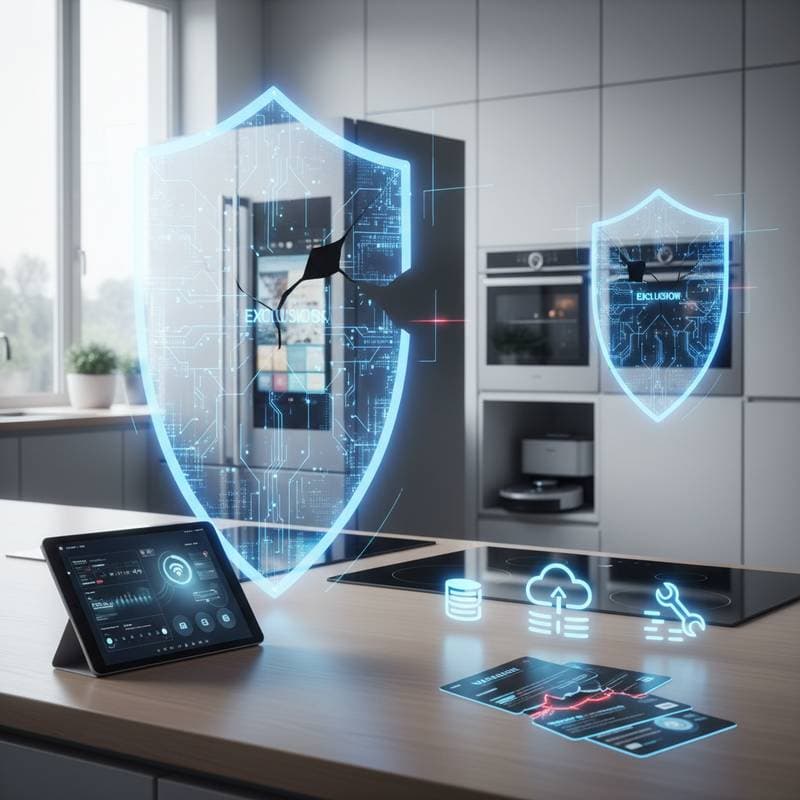Understanding Home Warranty Coverage for Smart Appliances
Smart appliances integrate advanced technology into everyday home functions, offering features like remote monitoring and automated controls. Devices such as connected refrigerators and app-enabled washers enhance convenience but introduce unique challenges for warranty protection. Homeowners often discover that standard warranties fall short for these intelligent systems, leading to unexpected expenses during failures. This article explores the differences in coverage, identifies common pitfalls, and provides strategies to secure comprehensive protection.
Reasons Homeowners Miss Key Warranty Details for Smart Devices
A frequent oversight occurs when individuals presume that a home warranty extends full protection to all appliances, regardless of technological enhancements. In reality, policies differ significantly across providers, with some classifying smart components as supplementary elements requiring additional endorsement. Others limit coverage to essential mechanical operations, excluding digital integrations.
Key factors contributing to these misunderstandings include:
- Overlooking nuanced policy language that distinguishes between physical mechanisms and software functionalities.
- Relying on manufacturer guarantees, which typically address only initial defects rather than operational or connectivity failures arising from usage or external factors.
- The fast pace of technological evolution, which outstrips the ability of warranty providers to consistently revise their terms.
By recognizing these issues early, homeowners can select policies that align with their smart home setups and prevent future disputes.
Key Exclusions in Smart Appliance Warranties
Exclusions represent the most overlooked aspects of smart appliance warranties, often resulting in denied claims despite apparent breakdowns. Providers define coverage narrowly to manage risks associated with evolving technology, focusing primarily on core hardware durability rather than interconnected systems.
Standard exclusions encompass:
- Failures related to software glitches or required updates.
- Disruptions in wireless connections, such as Wi-Fi or Bluetooth signal loss.
- Problems originating from external applications or cloud-based services.
- Damage from electrical surges or fluctuations.
- Replacement costs for parts in outdated or phased-out smart technologies.
For instance, if a smart refrigerator maintains temperature control but loses its inventory-tracking capability due to a network issue, the warranty provider might deem the primary function intact and reject the claim. Reviewing policy documents thoroughly reveals these boundaries and guides decisions on necessary upgrades.
Comparing Costs: Standard Versus Smart Appliance Protection
Evaluating financial implications helps homeowners determine the value of enhanced coverage. Standard plans suffice for basic appliances but leave smart features vulnerable, while add-ons address those gaps at an additional premium.
The following table outlines average annual costs and typical limitations based on common market offerings:
| Appliance Type | Base Warranty Cost | Smart Add-On Cost | Primary Coverage Gaps |
|---|---|---|---|
| Standard Refrigerator | $300–$500 | None | Mechanical components only |
| Smart Refrigerator | $300–$500 | $50–$150 | Sensors, connectivity modules |
| Standard Washer | $300–$500 | None | Mechanical components only |
| Smart Washer | $300–$500 | $100–$200 | Circuit boards, app interfaces |
| Smart HVAC System | $500–$800 | $100–$200 | Smart thermostats, software |
To illustrate differences visually, consider a bar chart that contrasts base costs against total expenses with add-ons, highlighting gap areas in red for digital elements like sensors and software. Such comparisons empower informed budgeting and highlight the long-term savings from proactive coverage.
A Practical Case: Navigating a Smart Oven Failure
Imagine a scenario where a homeowner's smart oven ceases to respond to remote commands through its companion application. The unit continues to heat and cook effectively, yet the interface repeatedly freezes, hindering preset programming. Under a basic home warranty, the claim faces denial because the provider prioritizes the oven's fundamental heating capability over electronic enhancements.
Upon examining the policy, the homeowner opts for an electronics endorsement, which extends protection to interface components. When a comparable glitch recurs several months later, the upgraded coverage facilitates a swift approval and repair. This example underscores the importance of tailoring warranties to specific device needs, potentially averting repair bills exceeding $500.
As one industry expert notes, "Providers respond faster when customers can clearly show what part failed, emphasizing the need for detailed documentation in claims."
Frequently Asked Questions on Smart Appliance Warranties
Do standard home warranties include smart features automatically?
Most plans emphasize mechanical reliability and exclude digital or application-dependent systems unless specified otherwise.
Does a power surge typically invalidate coverage?
External surges from wiring issues or weather events often fall outside protection. Installing surge protectors mitigates this risk and preserves eligibility.
How are software malfunctions handled?
These issues generally receive no coverage, though certain providers offer partial reimbursement if the bug impacts physical hardware performance.
Are peripheral smart components, such as sensors or cameras, protected?
Coverage applies only if explicitly enumerated in the contract; independent accessories usually require separate policies.
Is warranty transfer possible during home sales?
Yes, the majority of plans transfer seamlessly, enhancing marketability for properties equipped with modern smart systems.
Strategies to Maintain Smart Appliance Performance
Preventive measures extend device lifespan and minimize warranty disputes. Regular upkeep ensures optimal operation and supports successful claims when issues arise.
- Wipe sensors and ventilation areas to prevent dust accumulation and overheating.
- Perform firmware updates promptly to address known vulnerabilities.
- Connect devices to stable, secure networks to avoid intermittent disruptions.
- Equip all smart appliances with dedicated surge protection devices.
- Arrange professional inspections annually for high-value systems like HVAC units.
Another expert advises, "Smart homes deserve smart protection, and that starts with informed coverage choices."
Securing Comprehensive Protection for Your Connected Home
To implement effective safeguards, begin by auditing current appliances and their smart capabilities against your existing warranty. Contact providers to inquire about endorsements for electronics and connectivity, comparing quotes from at least three sources. Document all device specifications and maintenance records to streamline future claims.
By addressing these elements proactively, homeowners transform potential vulnerabilities into reliable assets. This approach not only reduces financial burdens but also sustains the seamless integration that defines modern living.





